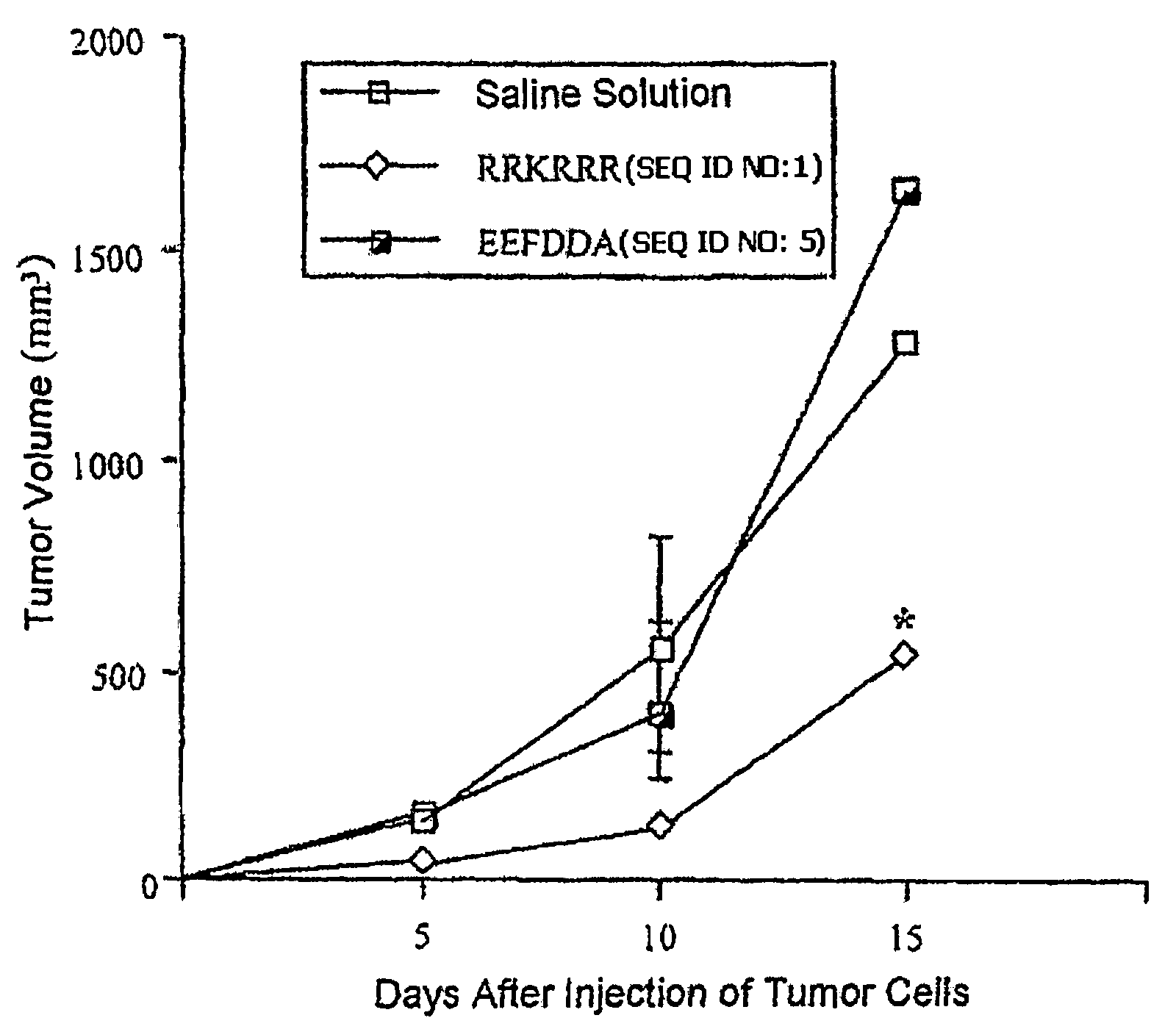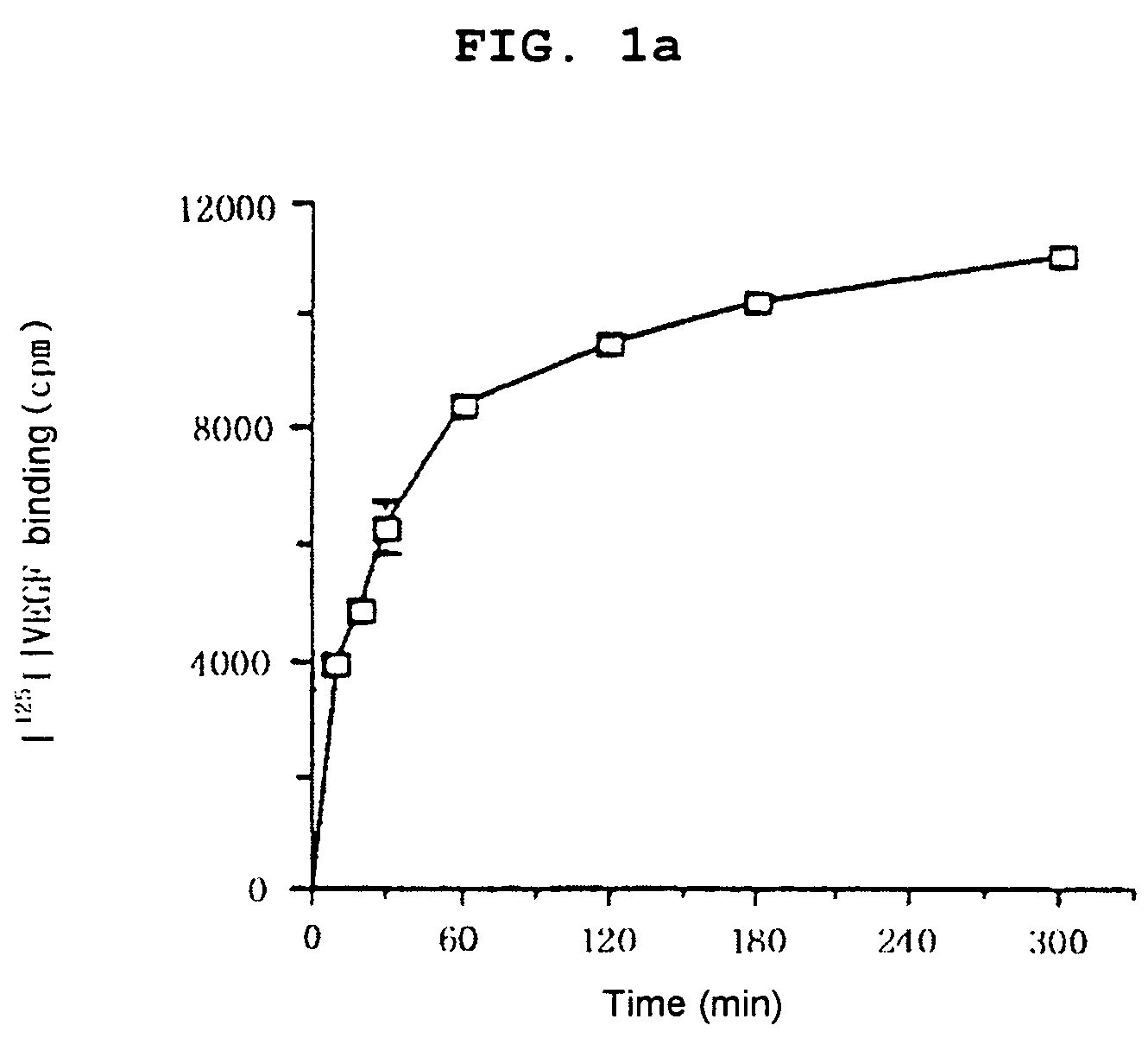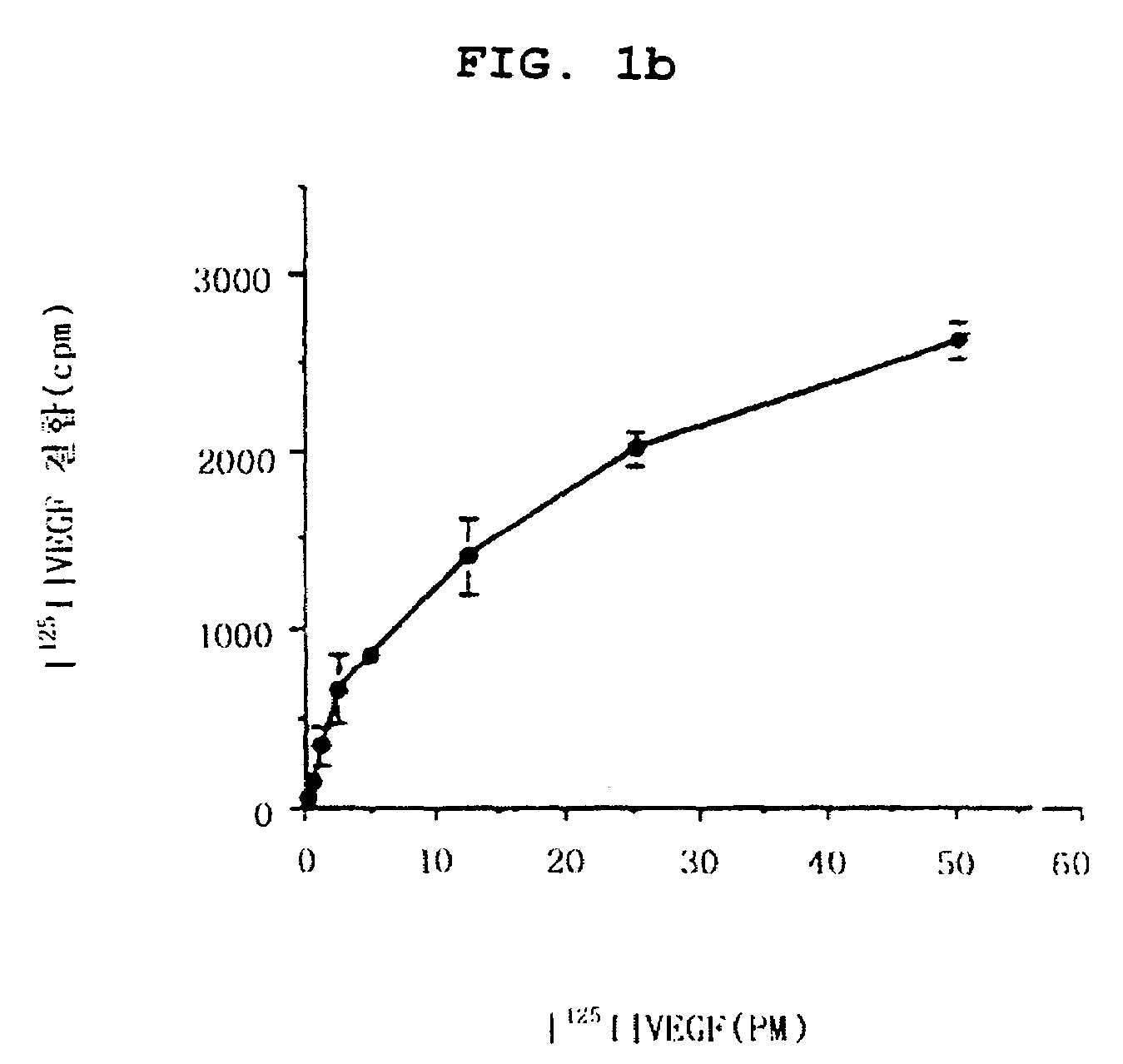Arginine-rich anti-vascular endothelial growth factor peptides that inhibit growth and metastasis of human tumor cells by blocking angiogenesis
- Summary
- Abstract
- Description
- Claims
- Application Information
AI Technical Summary
Benefits of technology
Problems solved by technology
Method used
Image
Examples
example 1
Characterization of 125I-Labeled VEGF
[0054]Utilizing 125I-labeled VEGF165 in various experiments, an examination was made as to whether this labeled protein have the same activity as that of natural VEGF protein.
[0055]First, HUVEC (human umbilical vein endothelial cells) (Clonetics) were placed on gelatin-coated 100 mm dishes (Falcon) containing a vascular endothelial cell culture medium (Medium 199+20% BCS, 5 μg / ml of heparin, 6 μg / ml of endothelial cell growth supplement, 5 ng / ml of basic fibroblast growth factor) and cultured at 37° C. in a CO2 incubator for animal cell culture. After a certain period of time, the cells were treated with trypsin / EDTA. After centrifugation, the cells harvested were suspended in a fresh, vascular endothelial cells culture medium and aliquoted at a density of 5×104 cell / well to a 24 well plate (Costar Co.). Following one-day culturing, the cells were added in a binding medium (Medium 199 / 25 mM HEPES, pH 7.4 / 0.1% bovine serum albumin) containing 0.2 ...
example 2
Search from Combinatorial Peptide Library for VEGF-Antagonistic Peptide Sequence
Step 1: Construction of Peptide Combinatorial Library
[0058]A peptide combinatorial library was constructed according to a known method (Pinilla, C. et al., Bio techniques, 13, 901 (1992)).
[0059]When a library consisting of hexa-peptides were synthesized, a predetermined amino acid residue was assigned to a specific one of the six positions while the other five positions were occupied by any of 19 kinds of amino acids (exclusive of cystein). Supposing that a specific amino acid residue at a determined position and other amino acid residues at the other positions in the peptides of six amino acid residues were represented by O and Xs, respectively, the peptides were expressed as OX2X3X4X5X6, X1OX3X4X5X6, . . . X1X2X3X4X5O. That is to say, in peptides of six amino acid residues, 19 kinds of amino acids are specified at each amino acid position while non-specified positions were occupied by any of amino acid...
example 3
Characterization of Peptides Screened from Combinatorial Peptide Libraries
[0074]There are various possible mechanisms to inhibit the binding of VEGF to its receptors. For instance, an inhibitor may be combined with either VEGF or one or more of its receptors, thereby inhibiting the interaction between VEGF and the receptor.
[0075]To verify the postulated mechanism in which the screened peptides might be associated directly with VEGF so as to inhibit VEGF from binding to its receptors present on the surface of vascular endothelial cells, the following experiments were conducted. Each of the hexa-peptides was fixed on a 96-well ELISA plate at a concentration of 100 ng / well in such a manner that a 20% acetic acid solution containing each peptide was dried in air. The plate was treated three times with a phosphate buffered saline containing 0.1% albumin for 3 min each time. A solution of 125I-labeled VEGF in the same phosphate buffered saline was added to the plate at a concentration of ...
PUM
| Property | Measurement | Unit |
|---|---|---|
| Inhibition | aaaaa | aaaaa |
Abstract
Description
Claims
Application Information
 Login to View More
Login to View More - R&D
- Intellectual Property
- Life Sciences
- Materials
- Tech Scout
- Unparalleled Data Quality
- Higher Quality Content
- 60% Fewer Hallucinations
Browse by: Latest US Patents, China's latest patents, Technical Efficacy Thesaurus, Application Domain, Technology Topic, Popular Technical Reports.
© 2025 PatSnap. All rights reserved.Legal|Privacy policy|Modern Slavery Act Transparency Statement|Sitemap|About US| Contact US: help@patsnap.com



